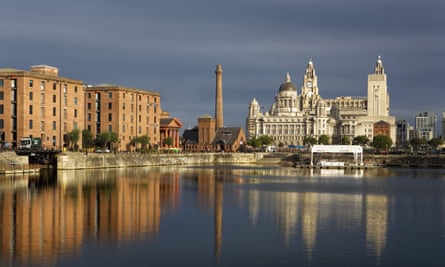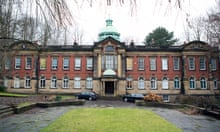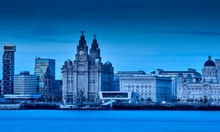The world heritage site status of Liverpool’s waterfront is in jeopardy after the city’s mayor, Joe Anderson, rejected a plea by UN cultural chiefs to halt development in the city.
Unesco recommended placing a two-year moratorium on new development within the world heritage site and its “buffer zone”, which includes much of the city centre. Anderson refused to comply with the cultural body’s request, saying that heritage status should not stifle growth in the city.
Liverpool city council said Unesco’s recommendation, if implemented, would put hundreds of millions of pounds worth of investment and jobs at risk by sending out the message that Liverpool had “shut up shop and was closed for business”.Anderson said he would be writing to the UN body informing it that the city would not be complying with its request. He said: “Part of the problem that we face is if we go out and say to people: ‘Please come and invest in our city,’ but then say: ‘You can’t put in a planning application for two years’ – then our growth is going to suffer.
“What I am saying in my letter is that we have a track record of protecting heritage and that speaks for itself. We value the heritage status but we can’t let it stifle the growth of our city. People ... come here for so many reasons – our culture, yes, our buildings, and because we are open and developing.”
But officials have warned that Liverpool’s waterfront, whose buildings – including the Three Graces – inspired the creation of the Bund in Shanghai, could lose its heritage site status if it fails to comply.
The city earned the designation from Unesco in 2004 in honour of its historic importance to the growth of the British empire and to European emigration to the US. But the waterfront was placed on a list of endangered world heritage sites in 2012 because of proposals to redevelop the docklands.
Heritage campaigners recently went to court in a fight to stop the demolition of 10 historic buildings near Liverpool Lime Street station in the buffer zone.
But the local authority said the number of historic buildings at risk of being lost is at a 25-year low and Historic England said the city is an example of best practice nationally.

A council spokesman said: “Liverpool remains open for business and all planning applications will continue to be determined in the usual way in line with national planning policies and guidance.
“We can’t place developments in large parts of the city centre on hold as it would send out completely the wrong message to investors, cost jobs and leave us open to expensive legal challenges by developers.
“We are working with the government, who make representations on behalf of world heritage sites at the Unesco committee, to look at how best to resolve the situation.”
The council said the suggested moratorium would put three large development schemes at risk, including an £80m residential skyscraper planned for Princes Dock, a £60m project to build two student accommodation towers near the main train station and a new ferry terminal.
The world heritage site covers six areas of the city and most of its landmarks, including the Pier Head and Albert Dock.
On the Pier Head stand the Royal Liver building, the Cunard building and the Port of Liverpool building, collectively known as the Three Graces. They were built as a testament to the city’s great wealth as a trading port in the late 19th and early 20th centuries.
Unesco says in its citation that Liverpool is the supreme example of a commercial port at the time of Britain’s “greatest global influence”.










